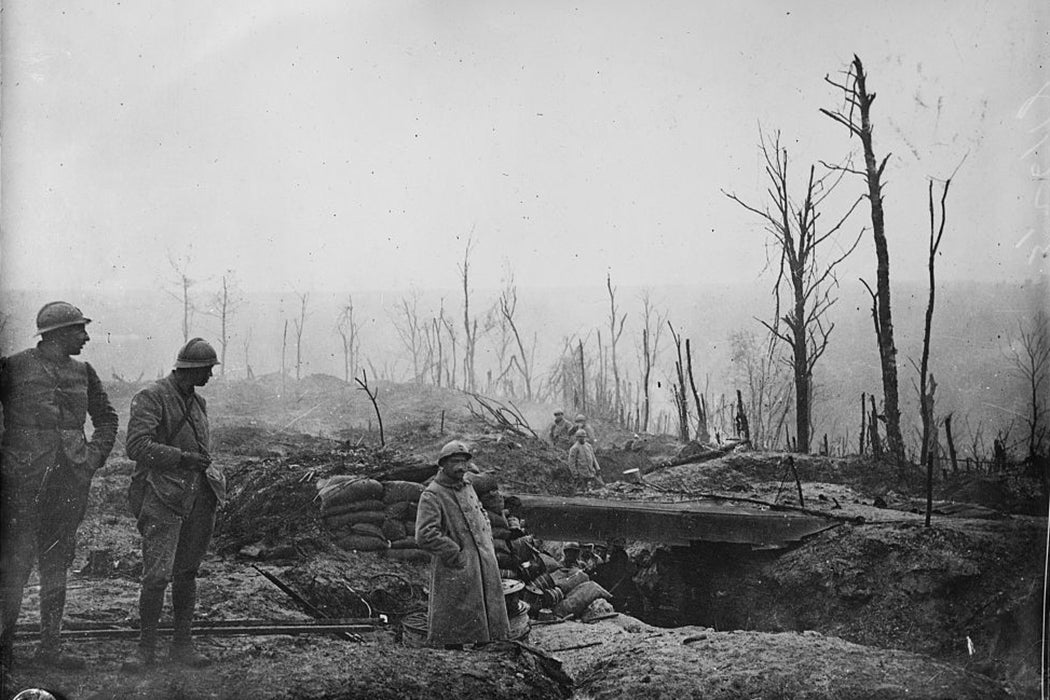The First World War saw the first major use of chemical warfare in battle. For the victims of these gas attacks, the horror of was very real. Yet the effects were also amplified by propaganda: after the war, apocalyptic fantasies of cities attacked by bombers dropping gas bombs made some greatly fear what they saw as the inevitability of the next war.
But in the end, the most-feared weapons were not used in combat in the European theater of World War II. And in Asia, there was only limited use of chemical and germ weapons by the Japanese against the Chinese. What happened?
The Hague Convention of 1889 outlawed the use of chemical warfare, but they didn’t stop their use in WWI. The post-WWI Geneva Protocol also banned the use of such weapons, but is that what kept the Allies and the Axis from using them during WWII? John Ellis van Courtland Moon thinks it was a combination of factors: unpreparedness, overestimation of opponent’s preparedness, cultural and moral inhibitions, and the threat of retaliation against those initiating use.
Moon reveals that there were proponents and publicists for chemical warfare during inter-war years. The U.S.’s Chemical Warfare Service claimed that chemicals actually caused fewer casualties than shrapnel bombs in WWI, that they spared landscapes and buildings, and that use of such weapons would bring future wars to a quick end. (The last argument was not true for the First World War.)
“Use of such weapons is outlawed by the general opinion of civilized mankind,” Franklin D. Roosevelt declared, pledging no use unless in retaliation. When the U.S military drew up plans to use gas on the Pacific islands where Japanese troops refused to surrender, civilian leadership still said no. Civilian leadership would, however, decide to drop two atomic bombs on Japan.
Even Hitler consistently overrode his political and military advisors clamoring for the use of chemical weapons in combat, possibly because he had been partially blinded by mustard gas in 1918. (Yet his personal experience allowed no mercy for those unable to retaliate. The Nazis first used gas in 1939 to kill mental patients; by 1941 gas was being used to murder Jewish prisoners in concentration camps and in the SS’s mobile gas vans on the Eastern Front.)
Moon concludes that during WWII, “deterrence thus held despite local tactical violations, despite allegations that chemical warfare had already been used, despite the ruthless use of toxic agents against helpless prisoners.” Writing near the end of the Cold War, and therefore thinking very much of nuclear war, he thought “many of the same considerations […] would deter the use of weapons of mass destruction on the battlefield.” So far, they seem to have; meanwhile, some chemical weapons are still used around the world against those with the least ability to respond.







